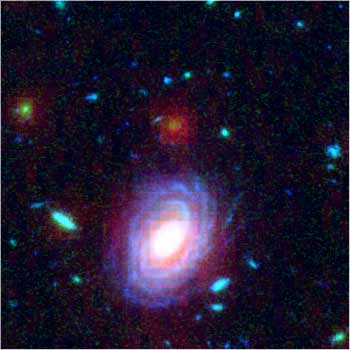This is how a joint discovery by Hubble and Spitzer shows. Until now, the explanation was that large galaxies are formed from the merger of smaller galaxies

American astronomers say they have found giant mature galaxies using the two largest observatories NASA has in space: the Hubble and Spitzer space telescopes.
The scientists were particularly impressed by the fact that the stars appeared to have formed in the galaxy. "This is a particularly impressive object," said Richard Ellis Ellis of the California Institute of Technology, a member of the team that discovered the galaxy.
"Although we are looking back to a time when the universe was only six percent of its age today, these galaxies managed to accumulate a mass 8 times that of the Milky Way. According to him, the fact that such a galaxy has already completed the process of star formation "indicates a very early period of intense activity."
"It's like crossing the ocean and finding a lone seagull - symbolizing nearby land. We have every reason to look beyond this object for the cosmic dawn where the first stars were ignited.
Bahram Mobasher of the Space Telescope Science Institute and leader of the research group, said that the galaxy initially appeared small and young like all other galaxies at this distance. Instead we discovered evidence that it is a highly developed and massive galaxy. This is a surprising discovery." said.
Although scientists believe that most galaxies were formed through the merger of smaller galaxies, the new discovery may indicate that at least some galaxies may have formed quickly and completely a long time ago. For such a large galaxy, birth was a process that included many explosions."
In addition to Hubble and Spitzer, this galaxy was also photographed by European scientists who used the European Space Agency's Southern European Observatory in Chile.
The findings are to be published on December 20th in writing in the Astrophysical Journal.
